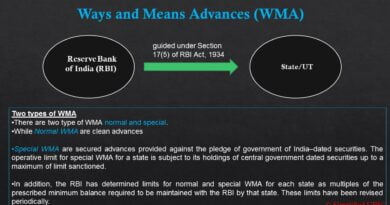Vigyan Jyoti And Vigyan Prasar
About Vigyan Jyoti:
- The Vigyan Jyoti programme was launched by DST in 2019
- Vigyan Jyoti is a programme to promote Science, Technology, Engineering, and Mathematics(STEM) learning among girl students and to inspire them towards STEM careers by creating a level-playing field for meritorious girls from grades 9 to 12 to pursue STEM in their higher education, especially from the top colleges in the areas where girls are hugely underrepresented.
- Classes Covered: This programme started at school level for meritorious girls of Class IX to Class XII.
- Coverage: The programme had been running successfully in 50 Jawahar Navodaya Vidyalayas(JNV) since 2019. It is now expanded to 50 more JNVs for the year 2021-22.
- Activities under the programme: The activities under the programme include student-parent counselling, visit to labs and knowledge centres, partners role model interactions, science camps, academic support classes, resource material distribution and tinkering activities.
- It also provides online academic support to students. It includes streaming of video classes, study materials, daily practice problems and doubt clearing sessions.
- Second Phase: The second phase of the Vigyan Jyoti aims to spread the program to 50 more districts. It will be in addition to the existing 50 districts across the country.
Engage with Science (Vigyan Prasar)
Engage with Science of Vigyan Prasar is another initiative to build interest and create a community of practice with students, teachers, and scientists connecting the high school students to the higher education institutions.
This is an interactive platform that will be built on top of the India Science Over-The-Top (OTT) platform to encourage and inspire high school students to pursue Science & Technology (S&T) for a career.
Objectives
The principal objective of Vigyan Prasar is to serve India’s science popularization agenda. This is achieved through several strategically important two – way stakeholder specific approaches to communicate about principles and practice of science and technology and implications for development and quality of life. Science popularization, therefore serves as a robust knowledge led tool to fulfill three mutually reinforcing public policy objectives.
- The first is to create and foster a well-informed citizenry.
- This is with special emphasis on developments in science and technology and the open-endedness and continual evolution of science and related knowledge systems.
- This approach creates the opportunity to assist national missions, duly highlighting dimensions of science and technology. Information clearing house functions and secretariat roles are equally important in this context.
- The second is about building capacities to communicate.
- This is through inroads into formal and non – formal teach and learn systems including education and other community centered interventions across thrust areas and regions of the country.
- This is expected to help reach the unreached through concerted networking at the local level.
- The third objective is implicit in the two already stated. It is about engagement that follows knowledge enrichment.
- This is a non – linear attribute of science communication; determined by the interplay of regulations, ease of access to alternatives, capacities to use them and the milieu of equity and justice to exert rights.
- It is important to take note of this facet of science communication so that popularization efforts and communicators are not trivialized. sets the context for knowledge centered engagement.
Vigyan Prasar accordingly serves as a resource & facilitation centre for S&T communication:
- Takes up large-scale science popularization tasks/activities.
- Develops knowledge products in many Indian languages; including publications, news features, films, radio programmes, compendia, portals and a variety of new media, exhibitions and kits.
- Builds capacities to communicate; film making and ham radio are specific examples
- Services dissemination needs of institutions.
- Networks with institutions, experts and knowledge platforms.
- Develops strategies for bilateral and multilateral initiatives &
- Assists national missions to strengthen outreach / engagement interventions. Using VP strives to adapt, utilize and employ new and emerging technologies for S&T communication / popularization.
IBM collaboration
In the other collaboration launched alongside, IBM will work with Vigyan Prasar – an autonomous body under the DST to help India’s science popularization agenda through several strategic initiatives, including ‘Engage With Science
As part of the collaboration, IBM will run the day-to-day activities of the program, including student workshops, seminars, and leverage its expertise to mentor the students.
Other Initiatives by DST to Promote Gender Parity in STEM:
- Women Scientists Scheme: This initiative primarily aims at providing opportunities to women scientists and technologists who had a break in their career but desired to return to the mainstream. It covers women between the age group of 27-57 years.
- Consolidation of University Research for Innovation and Excellence in Women Universities(CURIE) programme: It aims for improving R&D infrastructure and establishing state-of-the-art research facilities in order to create excellence in S&T in women universities.
- Artificial Intelligence(AI) Labs: Government has established AI labs in women’s universities with the goal to foster AI innovations. It will prepare skilled manpower for AI-based jobs in the future.
- Gender Advancement for Transforming Institutions(GATI): It aims to develop a comprehensive charter and a framework for assessing gender inequality in STEM.
- Knowledge Involvement in Research Advancement through Nurturing(KIRAN): It aims to bring gender parity in the Science & Technology sector by inducting more women talent in the research & development domain through various programmes.
Source: Vigyan Jyoti
You can find many articles on SCIENCE AND TECHNOLOGY (part of GS III) in our website. Go through these articles share with your friends and post your views in comment section.



